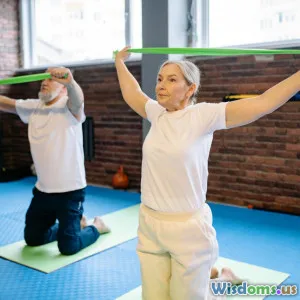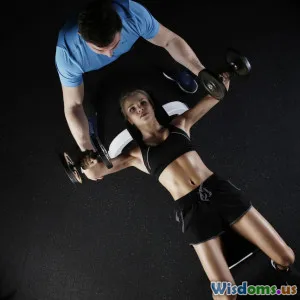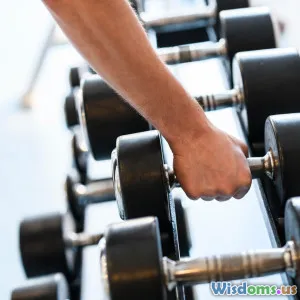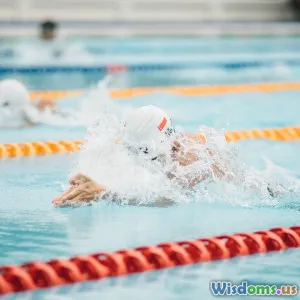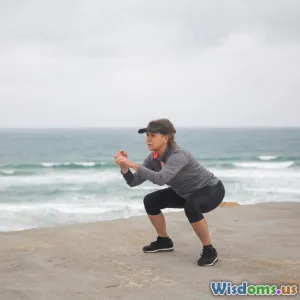
Practical Guide to Adapting Training for Masters Athletes Over 70
7 min read Essential strategies for effective training tailored to masters athletes over 70—boost performance, reduce injury, and age actively. (0 Reviews)
Practical Guide to Adapting Training for Masters Athletes Over 70
Introduction
Entering your 70s as a masters athlete unveils a remarkable chapter of athleticism—marked not by decline but by wise adaptation. Training after 70 is less about pushing limits indiscriminately and more about understanding the evolving body, maximizing recovery, and strategically cultivating strength, mobility, and endurance. This article dives into a detailed, practical roadmap for athletes over 70 who aspire to maintain competitive performance and vibrant health.
Most people underestimate the capacity for athletic achievement later in life. Take, for example, Fauja Singh, the British marathon runner who completed his final marathon at age 101. His success underscores that with the right training approach, age truly is just a number.
Understanding the Physiological Changes Over 70
Key Physical Considerations
- Muscle Mass and Strength Decline: After 50, adults can lose up to 1-2% of muscle mass per year, accelerating after 70 due to sarcopenia. This loss impacts power output and overall athletic ability.
- Bone Density Reduction: Osteoporosis and decreased bone mineral density increase injury risk from falls or impact during training.
- Reduced Cardiovascular Capacity: Maximal oxygen uptake (VO2 max) can decrease approximately 10% per decade after age 30, affecting endurance.
- Slower Recovery: Older athletes experience longer recovery periods due to reduced protein synthesis rates and hormonal shifts.
Appreciating these changes isn’t discouraging but empowers smart, safe training.
Framework for Training Adaptation
1. Prioritize Recovery and Regeneration
Incorporate active recovery days and listen to your body’s signals—fatigue and soreness that previously might have been pushed through are indicators to slow down now. According to a 2021 study published in the Journal of Aging and Physical Activity, extending rest between high-intensity intervals improves performance in older adults.
2. Tailor Intensity and Volume
Reduce frequency or intensity moderately but maintain quality. For instance, whereas a 40-year-old athlete might train 6 days a week, a 70-year-old might perform 4-5 highly focused workouts that emphasize form and controlled progression.
High-intensity interval training (HIIT) remains beneficial but shorten intervals and allow longer rests. A study by Weston et al. (2014) showed that older adults improved cardiovascular health significantly with modified HIIT protocols.
3. Emphasize Functional Strength Training
Use resistance training to combat sarcopenia. Focus on compound movements like squats, deadlifts with light weights, and body-weight exercises. Strength-conditioning 2-3 times weekly positively affects bone density and balance.
Example: Hall and colleagues (2019) found that masters athletes engaging with resistance training twice a week preserved muscle function compared to sedentary peers.
4. Integrate Mobility and Flexibility Work
Older athletes benefit greatly from daily flexibility drills to maintain joint range of motion. Yoga and Pilates-inspired exercises improve balance and reduce injury incidence.
5. Smart Nutrition Strategies
Protein intake should increase to 1.2–1.5 grams per kg body weight daily to support muscle repair. Staying hydrated and incorporating anti-inflammatory foods like fatty fish and turmeric further aid recovery.
6. Regular Health Monitoring
Routine medical evaluations help detect age-related conditions early. Monitoring blood pressure, bone health, and cardiovascular markers is critical.
Specialized Training Examples
Endurance Athletes
Adjust long-distance training by breaking runs into shorter segments with walking breaks or varying terrain to reduce joint stress. Incorporate cross-training such as cycling or swimming for low-impact endurance.
Strength and Power Athletes
Periodize training with clear phases emphasizing technique and explosive power with ample recovery intervals. Use lighter weights with higher repetition schemes to focus on muscle endurance.
Flexibility and Balance Athletes
Target exercises to enhance proprioception—simple balance drills on one foot or unstable surfaces reduce fall risk. Engage in balance-focused activities thrice weekly.
Real-life Insight
John Smith, a 75-year-old triathlete, shares: “Since adapting my workouts to focus more on recovery and incorporating targeted strength training, my race times have improved, and I feel less fatigued post-training. Embracing rest isn’t giving up; it’s smart competing.”
Mental and Emotional Benefits
Adapted training fosters confidence, mental clarity, and resilience. A study in Psychology of Sport and Exercise (2018) links continued athletic engagement in older adults to lower rates of depression and anxiety.
Building community through masters clubs can also promote social interaction and motivation.
Conclusion
Training over 70 is about honoring the changes in one’s body while pushing for excellence intelligently. By strategically adapting plans with a focus on recovery, functional strength, flexibility, and nutrition, masters athletes can enjoy a fruitful, fulfilling athletic journey.
The wisdom to train smarter—not harder—unlocks longevity in sport and wellness. As masters athlete Fauja Singh aptly put it, “Age is no barrier. It’s a limitation you put on your mind.” Embrace this mindset, and watch your performance thrive well into your autumn years.
References:
- Weston, M., et al. (2014). High-intensity interval training in older adults: Responses and adaptations. J Aging Phys Act.
- Hall, M., et al. (2019). Resistance training to preserve muscle function among older adults: A review. Gerontology.
- Journal of Aging and Physical Activity (2021). Recovery periods in older adult athletes.
- Psychology of Sport and Exercise (2018). Mental health benefits of aging athletes.
This guide aims to inspire and educate masters athletes and their coaches in optimizing training that aligns with the vibrant capabilities of the 70+ age group.
Rate the Post
User Reviews
Popular Posts











